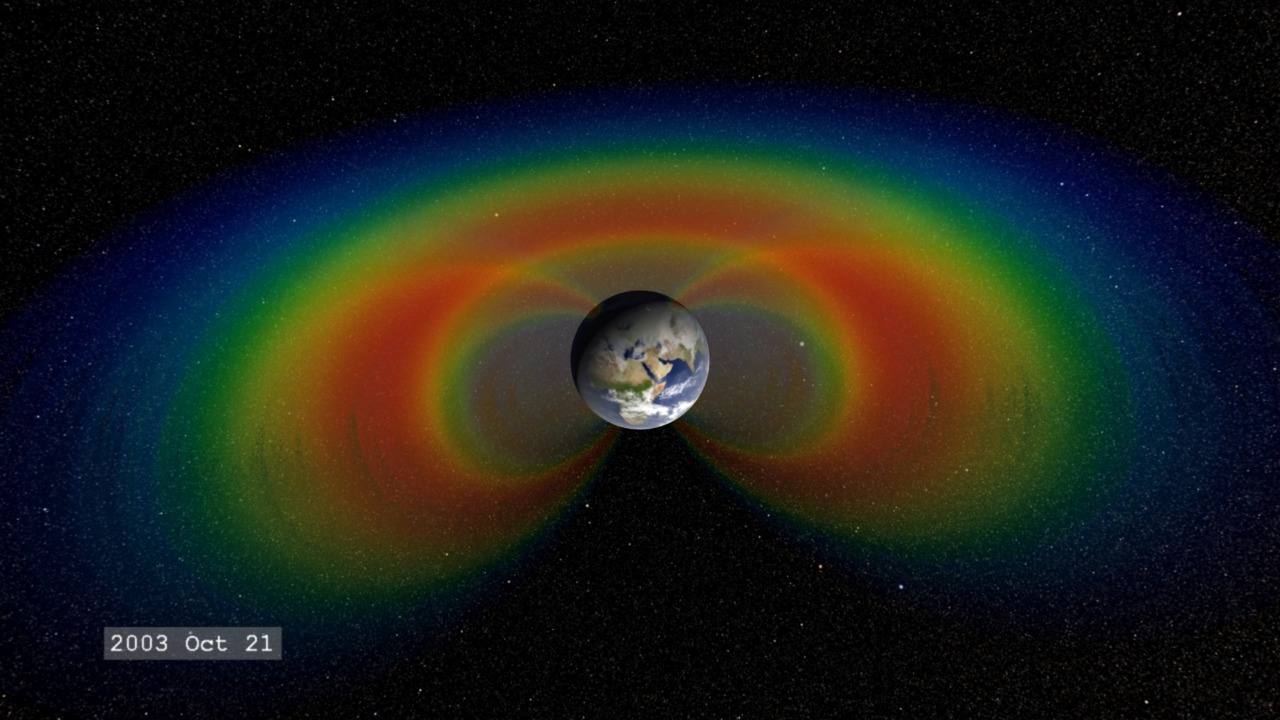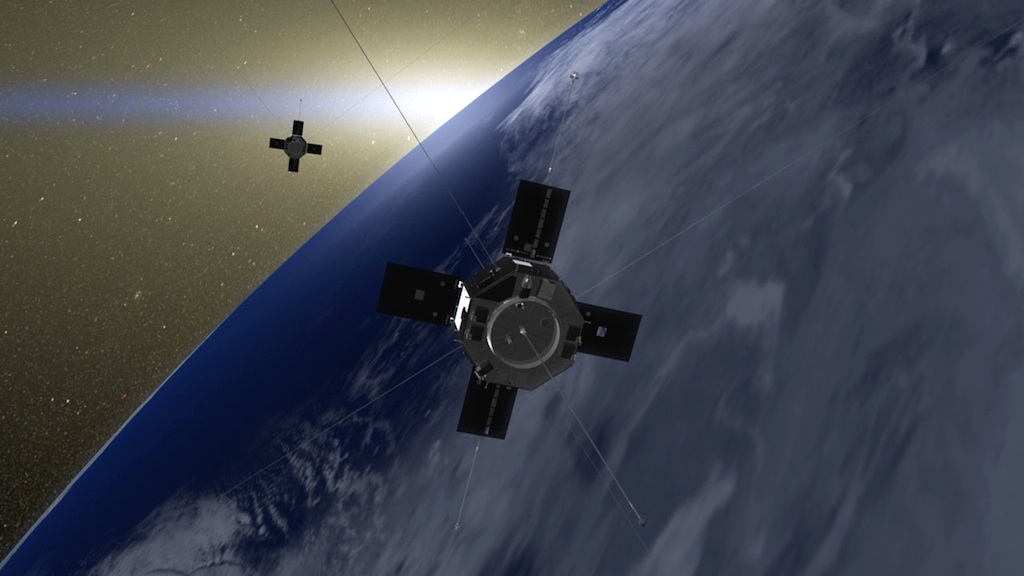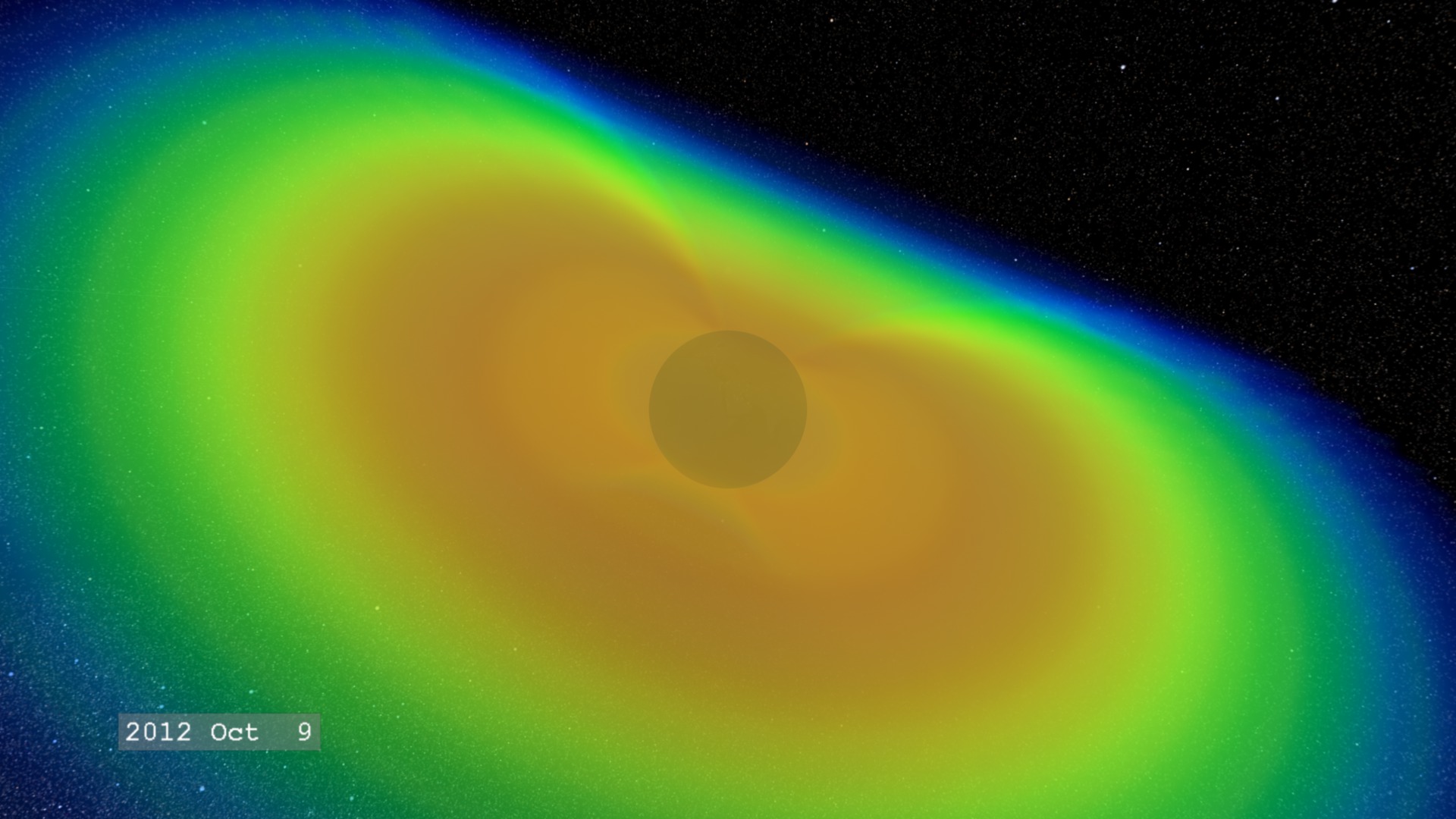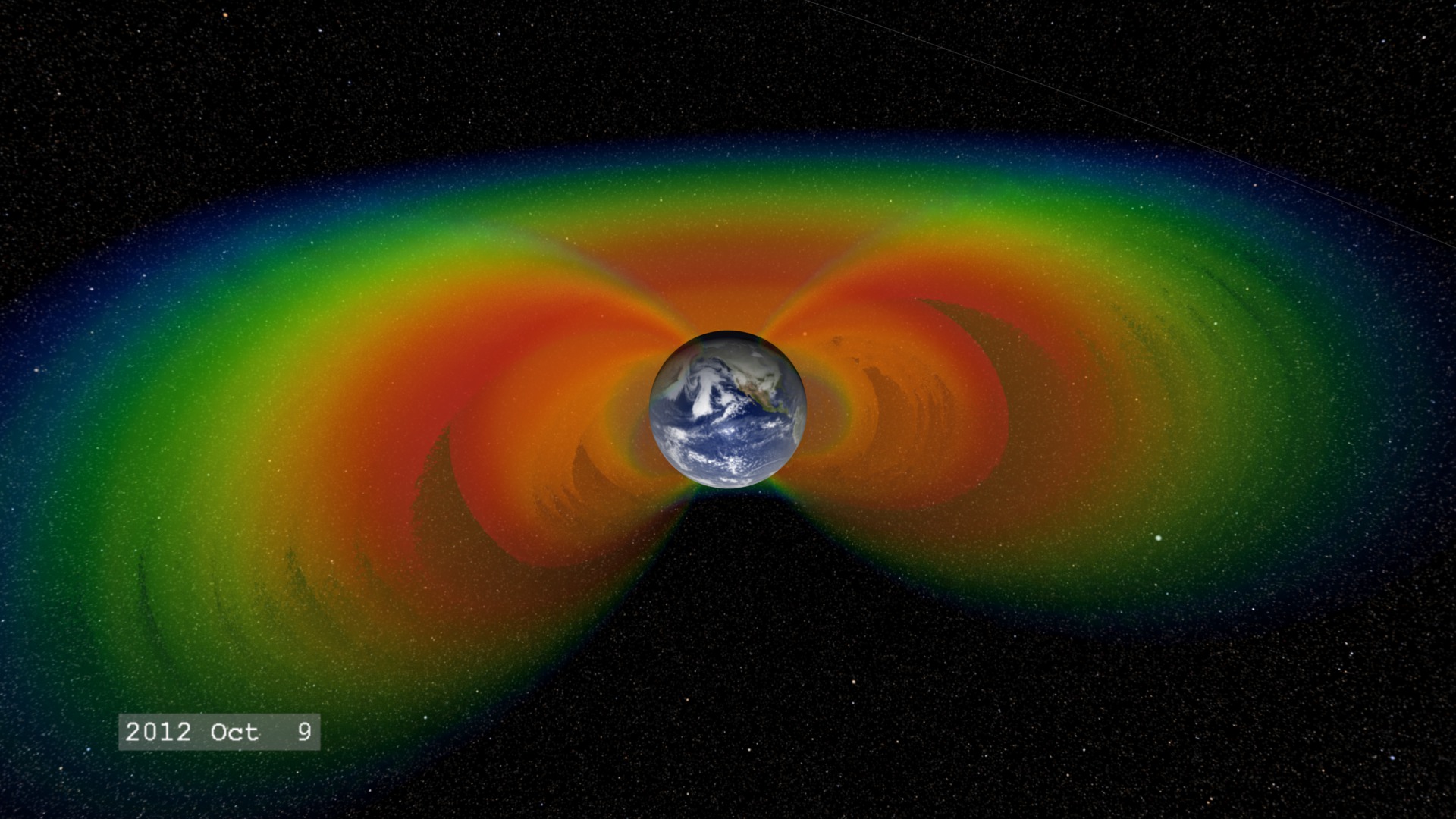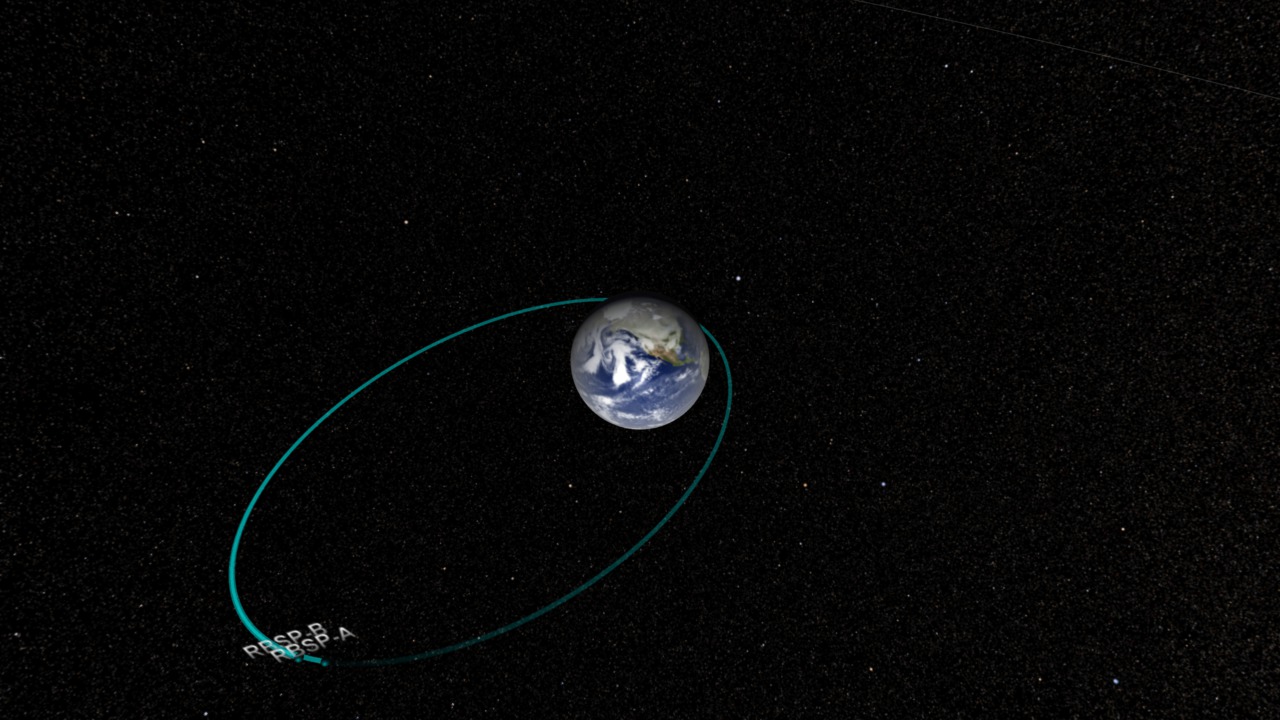The Van Allen Probes (formerly Radiation Belt Storm Probes - RBSP) Explore the Earth's Radiation Belts
The Radiation Belt Storm Probe (RBSP) is actually two satellites that will travel on a elliptical orbit around the Earth, ranging between 1.5 and 6 Earth radii. This range covers the inner region of the Earth's geomagnetic field.
In this region, many of the magnetic field lines intersect the surface of the Earth in the north and south. This means that lower energy ions and electrons, some 'boiled off' the Earth's ionosphere by solar ultraviolet radiation, can be trapped along these field lines. The charged particles spend their time bouncing between the 'mirror points' in the Earth's magnetic field. This trapped population forms the radiation belts around the Earth. The radiation created by this charged particle population can be hazardous to satellites and astronauts so it is important to understand their characteristics.
RBSP's orbit travels through the geomagnetic field and radiation belts.
Credits
Please give credit for this item to:
NASA/Goddard Space Flight Center Scientific Visualization Studio
-
Animator
- Tom Bridgman (Global Science and Technology, Inc.)
-
Producers
- Scott Wiessinger (USRA)
- Genna Duberstein (USRA)
-
Scientists
- David G. Sibeck (NASA/GSFC)
- Shrikanth G. Kanekal (NASA/GSFC)
Release date
This page was originally published on Tuesday, May 8, 2012.
This page was last updated on Sunday, January 5, 2025 at 10:13 PM EST.
Missions
This page is related to the following missions:Series
This page can be found in the following series:Datasets used
-
[Solar Anomalous and Magnetospheric Particle Explorer (SAMPEX): HILT]
ID: 89This dataset can be found at: http://sunland.gsfc.nasa.gov/smex/sampex/
See all pages that use this dataset -
SSCweb ephemerides (SSCweb)
ID: 538Satellite ephemerides
This dataset can be found at: http://sscweb.gsfc.nasa.gov
See all pages that use this dataset
Note: While we identify the data sets used on this page, we do not store any further details, nor the data sets themselves on our site.
